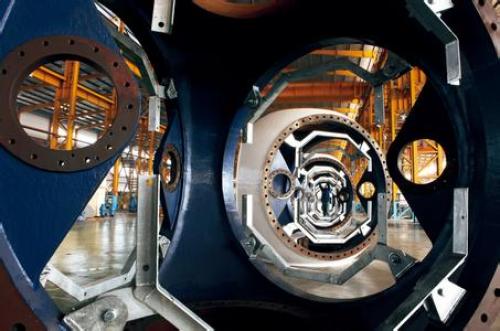
In 2013, the output value of China's equipment manufacturing industry exceeded 20 trillion yuan, 2.2 times that of 2008, with an average annual growth rate of 17.5%, accounting for more than one-third of the global equipment manufacturing industry, and ranking first in the world.
According to Su Bo, deputy director of the Ministry of Industry and Information Technology, China’s production of most equipment products ranks first in the world. In 2013, the output of power generation equipment was 120 million kilowatts, which accounted for about 60% of the global total; the shipbuilding completion volume was 45.34 million dwt, accounting for 41% of the global total; the auto production was 22.17 million units, accounting for 25% of the global total; and the output was 959,000 units, accounting for The global share is 38%.
Su Bo said that China’s equipment autonomy has reached a new level. The manned spaceflight and lunar exploration project and the “Bailong†manned deep dive device have made major breakthroughs. Large-scale transport aircraft and large passenger aircraft have completed the layout and significant progress has been made in the development work. Millions of kilowatts of nuclear power units, millions of kilowatts of hydropower units and other major technical equipment were successfully developed and applied in the market.
Significant progress has been made in the development of emerging industries. Significant progress has been made in the development of emerging industries such as smart manufacturing equipment, marine engineering equipment, advanced rail transit equipment and new energy vehicles. According to statistics, the output value of China's high-end equipment manufacturing industry has accounted for more than 10% of the equipment manufacturing industry. In 2013, the number of ocean engineering equipment orders accounted for 29.5% of the world market, new energy vehicles produced 35,000 vehicles, and new industries such as intelligent instrumentation, industrial robots, and additive manufacturing developed rapidly.
In addition, the industry has taken new steps. At present, the Ministry of Industry and Information Technology has awarded 77 national-level new industrialization industrial demonstration bases for equipment manufacturing, accounting for 29% of the total national demonstration bases. A number of industrial gathering areas with significant influence were initially formed. High-end equipment formed industrial demonstration bases represented by Shanghai Lingang, Shenyang Tiexi, Dalian Bay of Liaoning, Sichuan Deyang, etc. Shipbuilding and marine engineering equipment was formed in the Bohai Rim Region and Changzhou. The industrial clusters centered on the triangle region and the Pearl River Delta region; the major brand enterprises of construction machinery are concentrated in Xuzhou, Changsha, Liuzhou and Linyi. Shenyang, Wuhu, Shanghai, Harbin, and Guangzhou have established industrial robot industrial parks.
Su Bo believes that although China has become a major player in the equipment manufacturing industry, it is still not a powerful country in the equipment manufacturing industry. Compared with advanced countries, there is still a big gap. The main performances are as follows: First, weak independent innovation capability, low level of R&D and design, lack of testing methods, and lack of key common technologies; second, lack of basic supporting capabilities; core parts are subject to human beings; basic manufacturing processes are backward; key materials depend on imports; The industrial structure is irrational, low-end production capacity is excessive, high-end production capacity is insufficient, and the development of producer services is lagging behind. Fourth, development quality and efficiency are not high. The current value-added rate of China's equipment industry is 26%, which is lower than the average level of developed countries 6-8. percentage point.